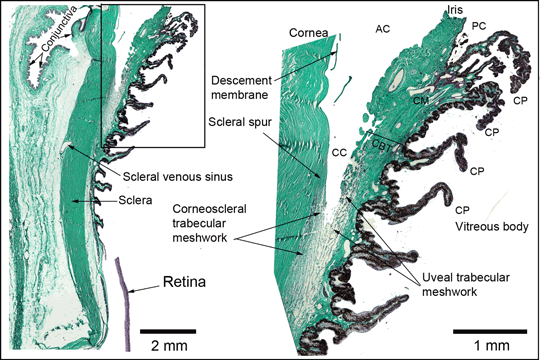Article contents
Morphological, Immunohistochemical, and Ultrastructural Studies of the Donkey's Eye with Special Reference to the AFGF and ACE Expression
Published online by Cambridge University Press: 06 May 2022
Abstract

The donkey is mainly used as a working animal for riding and pack transport, as well as for dairy and meat production. Eye afflictions are common in donkeys, thus requiring a detailed study. A few studies had focused on the donkey's eye, and most of them had considered it, merely, a horse's eye. This study aimed to investigate the anatomy, histology, ultrastructure, and immunohistochemical features of the donkey's eye. The results were recorded and compared to those of horses in certain dimensions. Unlike horses, the donkey's eye is more circular in the contour of the cornea, has smaller lenticular thickness, and has longer anterior and vitreous chambers. Positive immunoreactivity to acidic fibroblast growth factor in the basal cell layers of the cornea was observed, indicating their role in cell differentiation and the renewal of the epithelium. Moreover, the corneal keratocytes expressed angiotensin-converting enzyme, which plays a role in corneal homeostasis and wound healing. Additionally, telocytes, hyalocytes, and other immune cells were observed within the iris and ciliary processes. Hence, this work is an updated detailed study of the morphology and ultrastructure of the donkey's eye and reveals some similarities and dissimilarities to the horse's eyes, which should be considered in clinical practice.
Keywords
- Type
- Micrographia
- Information
- Copyright
- Copyright © The Author(s), 2022. Published by Cambridge University Press on behalf of the Microscopy Society of America
References
- 5
- Cited by




